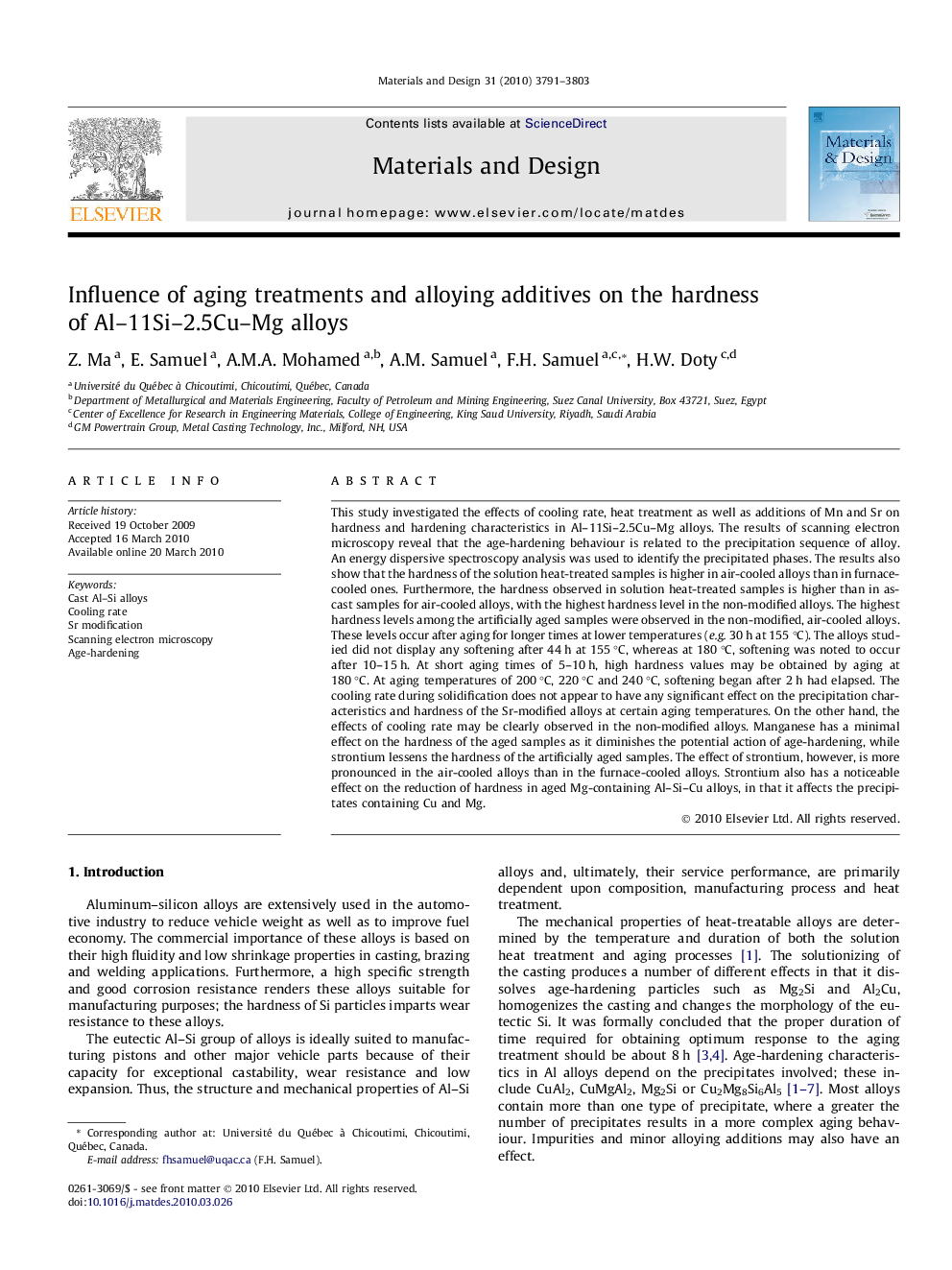| Article ID | Journal | Published Year | Pages | File Type |
|---|---|---|---|---|
| 831894 | Materials & Design (1980-2015) | 2010 | 13 Pages |
This study investigated the effects of cooling rate, heat treatment as well as additions of Mn and Sr on hardness and hardening characteristics in Al–11Si–2.5Cu–Mg alloys. The results of scanning electron microscopy reveal that the age-hardening behaviour is related to the precipitation sequence of alloy. An energy dispersive spectroscopy analysis was used to identify the precipitated phases. The results also show that the hardness of the solution heat-treated samples is higher in air-cooled alloys than in furnace-cooled ones. Furthermore, the hardness observed in solution heat-treated samples is higher than in as-cast samples for air-cooled alloys, with the highest hardness level in the non-modified alloys. The highest hardness levels among the artificially aged samples were observed in the non-modified, air-cooled alloys. These levels occur after aging for longer times at lower temperatures (e.g. 30 h at 155 °C). The alloys studied did not display any softening after 44 h at 155 °C, whereas at 180 °C, softening was noted to occur after 10–15 h. At short aging times of 5–10 h, high hardness values may be obtained by aging at 180 °C. At aging temperatures of 200 °C, 220 °C and 240 °C, softening began after 2 h had elapsed. The cooling rate during solidification does not appear to have any significant effect on the precipitation characteristics and hardness of the Sr-modified alloys at certain aging temperatures. On the other hand, the effects of cooling rate may be clearly observed in the non-modified alloys. Manganese has a minimal effect on the hardness of the aged samples as it diminishes the potential action of age-hardening, while strontium lessens the hardness of the artificially aged samples. The effect of strontium, however, is more pronounced in the air-cooled alloys than in the furnace-cooled alloys. Strontium also has a noticeable effect on the reduction of hardness in aged Mg-containing Al–Si–Cu alloys, in that it affects the precipitates containing Cu and Mg.
